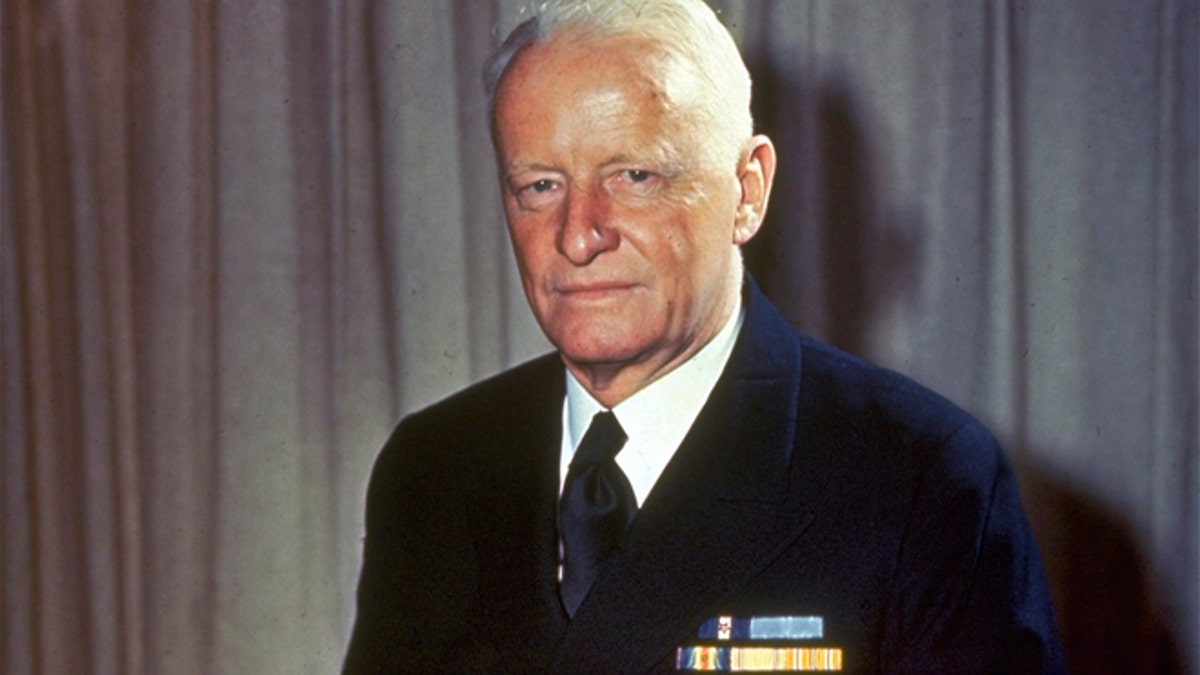
This undated file photo shows Adm. Chester W. Nimitz, commander of U.S. Naval forces in the Pacific during World War II, sitting on a desk in an unknown location. (AP)
NEWPORT, R.I. – The U.S. Naval War College released a trove of World War II information Monday by posting online the operational diary kept by the Pacific commander, Adm. Chester W. Nimitz, during the war against Japan.
The 4,000-page multivolume collection includes a running summary of the situation for every day of the war in the Pacific compiled by Nimitz's planning staff. It is the only known similar document to survive from the war, said Prof. John Hattendorf, who teaches maritime history at the Naval War College in Newport, R.I.
The Nimitz "Graybook," named for the gray material in which it is bound, is posted at www.usnwc.edu/graybook . Traffic was so heavy Monday that the site was inaccessible to many, a spokeswoman for the Naval War College said. They were working to fix the problem.
The diary begins on Dec. 7, 1941, the day of the attack on Pearl Harbor, with the line: "The war opened with the attack of Japanese aircraft on Oahu." It goes on to list the locations of the Navy's forces throughout the Pacific, the damage sustained that day and what is known about the enemy's position.
Nimitz's planning staff prepared a similar summary for him every day of the war. Unlike other commanders during World War II, Nimitz kept them, and the diary was found in his personal papers, Hattendorf said. It also includes supporting documentation for the summaries, including the orders Nimitz received from Washington and elsewhere, intelligence information from other commanders and exactly what his fleet units were doing.
The entries run through Aug. 31, 1945, as the war in the Pacific came to an end.
The diary was declassified in 1972 and is kept at the Naval History and Heritage Command in Washington, making it accessible only to those who can travel there. Hattendorf said the project to digitize it, make the text searchable and put it online will make it easier for scholars worldwide to study the diary and what Nimitz knew as he made command decisions.
"We'll really be able to understand in a much better way how Adm. Nimitz thought and the challenges he saw every day of the war," he said. "It can be searched for particular information, when particular information was known by the commander, how we reacted to a particular change ... what the president was telling him."
Nimitz, who died in 1966, graduated from the War College and lectured there several times. The project was funded through the Naval War College Foundation.





















